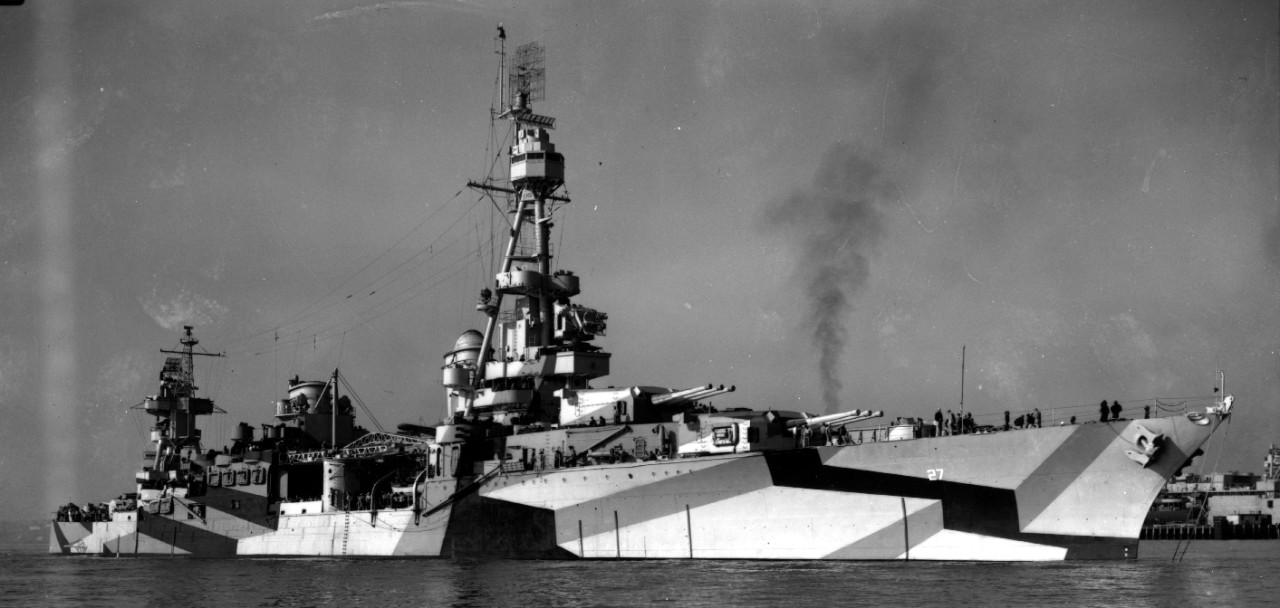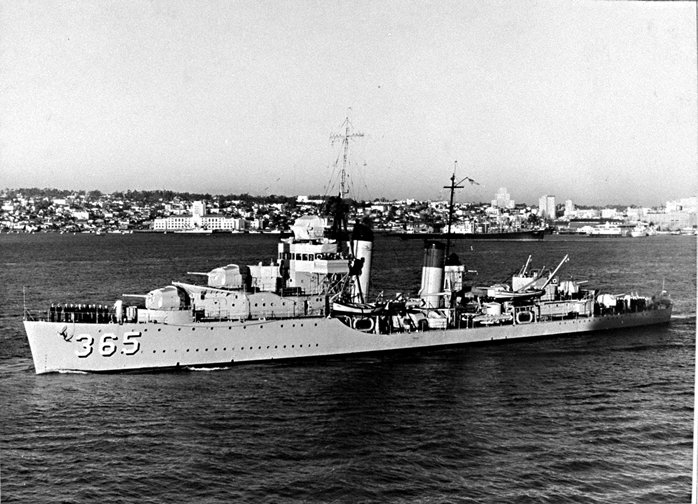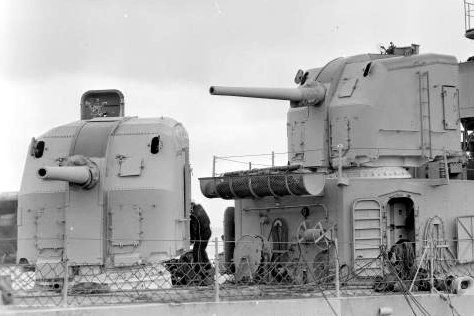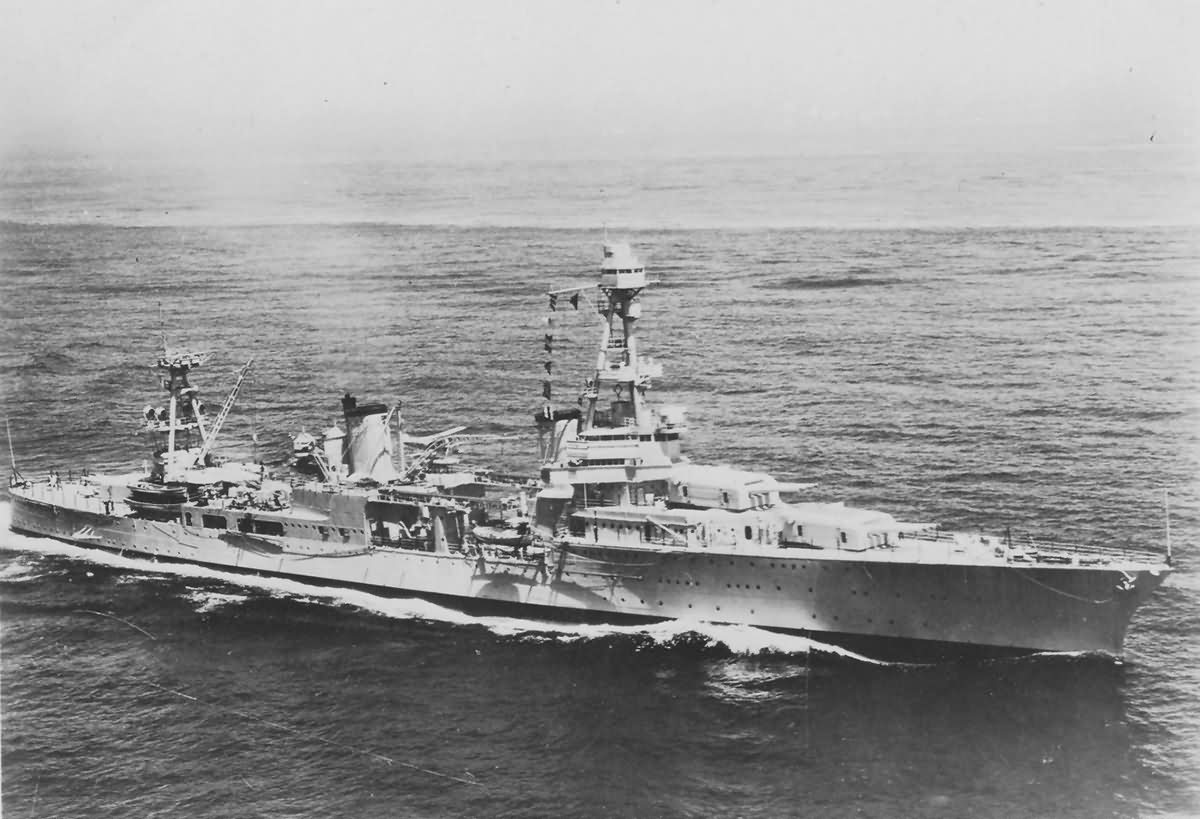With the fall of the Mariannas in June and July of 1944, and the invasion of the Palaus in September 1944, the Japanese war machine was falling back. The big question for them was where would the Americans attack next. Japanese strategic plans for a decisive battle with the U.S. fleet were already established by September 1944. (wikipedia) Anticipating the various options open to American landing forces, the Japanese operational order, code named Sho (“victory”), provided four scenarios to counter an invasion anywhere between the Philippines and the Kuriles.
The United States meanwhile had decided to bypass Formosa (Taiwan) and invade the Philippines. A large US carrier force would also stage attacks on the Japanese military in Formosa. To relieve Japanese military pressure on these area, a diversionary attack was planned for Marcus Island, one that hopefully would draw the Japanese forces out to defend Marcus.
“Bombard MARCUS ISLAND in order to create diversion and destroy enemy installations. Targets are radio and weather stations, supply dumps and building areas”
Commander Task Group 30.2 issued the following general task:
“This force will on October ninth, destroy by bombardment specific targets on MARCUS ISLAND and employ various deceptive measures, in order to cause doubt to Japanese high authorities as to Blue’s intentions against MARCUS in the succeeding eighteen hours. Enemy ships encountered will be sunk”
Task Force 30.2, consisting of three cruisers and six destroyers would act as the “invasion force”. Radar deflectors resembling more ships and smoke screens would be deployed to hopefully raise the attention of the Japanese. The date of 9 October 1944 was selected. The scheduled invasion of the Philippines (Leyte) was scheduled for 20 October 1944 and the carrier sweep of Okinawa and Formosa for 12 October 1944.
RAdm Allan E. Smith would command the mission to Marcus. The Cruisers Chester, Pensacola, and Salt Lake City would form the nucleus and the destroyers Dunlap, Fanning, Cummings, Case, Cassin, and Downes would provide screening duties.

CTG 30.2/Comcrudiv 5 Operations Order # 21-44 was issued to the ships.
This operation order organized Task Group 30.2 as follows.: TU 30.2.1 – CHESTER, SALT LAKE CITY, PENSACOLA; TU 30.2.2 – DUNLOP, FANNINF, CUMMINGS; TU 30.2.3 – DOWNS, CASSIN, CASE. Mission of our task group: On 9 October 1944, destroy by bombardment specific targets on MARCUS ISLAND and employ various deceptive measures in the order to cause doubt to Japanese high authorities as to Blue’s intentions against MARCUS in the succeeding 18 hours. Enemy ships encountered to be sunk. This operation order effective upon departure from Saipan. Bombardment to be conducted pursuant to annexes hereto. Cruising dispositions, search, attack, and battle plans to be in accordance with Comcrudiv 5 Oporder No. 20-44.

Friday 6 October 1944
The plan to bombard MARCUS ISLAND was transmitted to Saipan on 30 October 1944 from the Commander fo the THIRD Fleet. Received at 1600, the planning staff went right to work. The Commander Cruiser Division Five Operations Order No. 21-44 was distributed to the ships involved around noon on 6 October 1943. High seas in the Saipan anchorage rendered boating conditions so hazardous that it was deemed inadvisable to call a conference of Commanding Officers to discuss the operation. The high seas also prevented refueling the destroyers. They would have to be refueled in route from the Cruisers.
On Tuesday afternoon, 6 October 1944, the task group 30.2 got underway from their Saipan anchorage. They maintained radio silence and formed up into their cruising formation, with the cruiser CHESTER being the flagship. A Base course of 000 degrees true was set and at 1706 they increased their cruise speed from 12 to 17 knots.
6 October 1944
Cruiser USS SALT LAKE CITY LOG Entry – Friday 6 October 1944 ______ 1600 to 1800 1600 Main engines test satisfactory. 1602 Commenced heaving in on port anchor. 1609 PENSACOLA 9CA24) under way. 1616 CHESTER (CA27) under way. Secured boiler #2. 1618 Anchor a-weigh; under way in accordance with Dispatch #060307 f CTG 30.2. 1619 Secured boiler #1. Commenced maneuvering to leave the harbor. 1623 Set Material Condition Zebra below the second deck. 1645 Set Condition of Readiness II (mod). All engines ahead 2/3, 12 knots, 115 rpm, 1448 C/c to Secret special sea detail. 1651 C/c to 270 degrees (t&pge). 1705 C/fc to right to 000 degrees (t&pgc), 357 degrees (psc) by column movement. 1705 Darkened ship. 1706 C/fs to 17 kts 162 rpm. 1715 On station in formation 6-S with CHESTER, guide, at 000 bearing 000 degree (t), range 2000 yards on course 000 degree (t&pgc), 356 degrees, (psc) in company with TG 30.2 comprised of CHESTER (CA27), PENSACOLA (CA24) and CASSIN (DD372), CASE(DD370), FANNING (DD385), DUNLAP (DD384) and CUMMINGS (DD 365) with OTC Rear Admiral A. E. SMITH, ComCru Div 5 and CTG 30.2 in CHESTER. Boilers 3,4, 7 and 8 in use with engines in maneuvering combination. Wind intensity indicator out of commission.
Saturday 7 October 1944
General quarters was sounded for sunrise security at 0355. It was secured at 0440 Condition of readiness 3 was set. Base course of 090 true, speed 17 knots. The destroyers refueled while underway. The cruisers launched their observation aircraft to maintain a watch over the formation. Nothing out of the ordinary was encountered. Around midnight, the destroyer USS CUMMINGS left the formation to practice its part in the deception plan for 9 October 1944. It practiced making smoke and launching Rayewind radar targets. At 0535, it completed its training and rejoined the formation.
Sunday 8 October 1944
General quarters was sounded for sunrise security at 0355 and secured at 0441. Condition readiness 3, with a base course of 030 true. Zigzagging according to plan No. 6.

At 1600, the USS CUMMINGS left the formation to take station east of Marcus Island in order to carry out the dawn diversion plan.
The ships were darkened at 1630 and continued their eastward course. They would arrive in the Marcus Island area in the morning.
1643 Unexpected heavy seas were encountered shortly after dark which resulted in two officers, Lieutenant (JG) Paul K. Yarbray, USN, and Lieutenant (JG) Bernard A. Dunson, USN, being washed overboard from the USS Pensacola. (Lat. 22-19N, Long 152-40.5E) approximately 150 miles south west of Marcus Island.

Immediate search and rescue steps were taken, with search being maintained until 1821 by the USS DOWNES. The cruiser USS SALT LAKE CITY sighted the men and set a flare adrift abeam of them and threw two life jackets overboard in their direction. The cruiser PENSACOLA and destroyer USS DUNLOP left the formation to look for the men. Neither officer was ever located nor recovered.
At 1852, the search was stopped and the formation of ships proceeded toward their target on a base course of 030 degrees, with speed at 16 knots. Zigzagging was commenced at 2150.
Monday 9 October 1944 Marcus Island attack
At 1600 the destroyer USS CUMMINGS left the battle formation of Task Force 30.2 and proceeded to a point 17 miles to the east of Marcus Island. There it began the first part of the diversion operation at dawn. It was hoped that under the pressure of bombardment, the Japanese would assume that an amphibious landing was in the making and that they would be prompted into making reports to the Japanese staff in Japan of an erroneous nature.

Dawn deception plan
Arriving on station at 0340 Tuesday morning, 17 miles to the east of Marcus Island, just over the horizon from the island, the USS CUMMINGS proceeded to make smoke puffs similar to those seen from a large convoy over the horizon. They also released aerographers balloons to which were attached Raywind radar targets. The balloons were anchored to small wood floats, with 150 feet of light line. These would provide a radar return of transport ships. Then, it made a smoke screen two miles long. Upon completion of its orders at 0518 am, USS CUMMINGS increased speed to 30 knots and proceeded back to join the TF 30.2 ships, staying over the horizon from the island and out of sight of the Japanese.
The Bombardment begins – Phase 1
The formation of Cruisers and Destroyer proceeded through the night toward their target. the plan was to make three passes by the island and bombard it with the cruiser’s 8 inch guns and the destroyers 5 inch guns. It would not be a cake walk. Marcus Island had gained the reputation of the being one of the the most accurate gunners in the Pacific area.

The formation of warships arrived in the darkness of Monday morning south of MARCUS ISLAND. At 0220 they formed their approach disposition of cruisers in line and set a course of 030 degrees at a speed of 17 knots.
At 0250, MARCUS ISLAND was picked up by the ships radar, bearing 050 degrees and 52,000 yards (a little less than 30 miles) distant. General Quarters was called at 0340 and they changed course to 090 degrees into the wind to allow the cruisers to launch their spotting aircraft.

Seventeen minutes later, two Japanese radars on MARCUS ISLAND were detected by the Combat Information Center (CIC). One was sweeping and the other fixed on the battle formation of TF 30.2.
Between 0400 and 0405, each cruiser launched planes for spotting for the ship’s guns and also submarine patrol. After launch, the ships resumed the 030 degree course and speed of 21 knots.
At 0415 MARCUS ISLAND was visually sighted from the bridge, bearing 056 degrees, range 16,700 yards (9.5 miles). The towers of the radio station could clearly be seen and would be the primary targets for the ships.
Just 3 minutes later, at 0418, the lead cruiser USS CHESTER passed through point ABLE, at which all ships turned to the firing course of 360 degrees. Cruisers in line with 1200 yards between them. Two destroyers led the way, off the front of the USS CHESTER, one on each side. The USS PENSACOLA was the second cruiser, behind the USS CHESTER. The other three destroyers assumed positions on the engaged (Right or starboard side in this case) of the last cruiser, USS SALT LAKE CITY. The crews were ready down below. All hands were alert, ready for the battle about to begin.
At 0421, upon signal from the USS CHESTER, fire was opened by all ships on their assigned targets. The USS CHESTER fired three 3-gun salvos on the dual purpose guns at . The USS PENSACOLA opened fire with their main 8 inch battery at the main radio station on MARCUS ISLAND at a range of 14850 yards. (8.4 miles). USS CHESTER checked fire and made preparations for counter-battery fire on the guns on North Point in the event of fire from those guns.

Seven minutes after the US Navy ships opened fire, the Japanese on MARCUS ISLAND began to return fire.at 0427 a flash was observed from the enemy shore battery on West Point and a minute later, a short splash was observed astern of the USS SALT LAKE CITY. The USS CHESTER fired a full 8″ salvo at the West Point battery, after which no further firing came from this gun emplacement.

0402 The USS CHESTER catapulted tow aircraft into the air for spotting purposes.
0415 The USS CHESTER visually sighted Marcus Island at a bearing of 056 degrees and about 8.5 miles away.
0418 The order was given to change the course to 000 degrees true (due north) with cruisers in line, in order CHESTER (guide), PENSACOLA, and SLAT LAKE CITY. The formation of ships proceeded on a line paralleling the western coast of Marcus Island.

0420 The USS CHESTER commenced firing at Marcus Island
0423 The USS PENSACOLA opened fire with their main battery at the main radio station on the northwest side of Marcus Island, at a range of 14850 yards. (Approximately 8.4 miles). Fire was maintained while proceeding along the northerly courses until 044.6 whenfire was checked and course was reversed to 180 degrees true.



0449 Now proceeding on a southerly heading of 180 degrees true, the cruisers again commenced firing their main battery to port at the main radio station. Speed was increased to 24 knots at 0459. Ceased fire at 0511.
0513 Now about 9 miles to the southwest of Marcus Island, the cruisers changed their coursed to 155 degrees true and commenced firing 10 gun salvos to port in counter battery fire at Coastal Defense guns located in area 9-d and on East Point.
0515 Course was changed to 105 degrees true and continued counter-battery fire while proceeding on an easterly and then southeasterly course until0530 when fire was checked and course was reversed to 286 degrees true to proceed back to the west of Marcus Island. Counter-battery fire was reopened to starboard.
0558 Ceased fire and withdrew to the west.
The Bombardment – Phase 2
1116 The formation of cruisers and destroyers returned to Marcus and opened fire once again with their main batteries at the main radio station on Marcus Island. However, they moved farther away from the guns of the island this time. They proceeded up the west side of the island and turned to the east and south east to parallel the north east coast of Marcus, at a range of 18,100 yards. ((10.2 Miles). the reversed their course and proceeded back on a westerly heading off the northern coast of Marcus island.

1202 TF 30.2 ceased fire and retired to the west.
Aftermath of bombardment
Enemy fire seemed to be very effective. A total of 146 splashes were counted near the ships. The enemy batteries obtained straddles at 17,000 yards (9.7 miles) but no hits were received by any of the ships. Anti-aircraft fire varied from meagre to intense. At times spotting planes had to use evasive measures to stay out of A.A. barrages.
1500 The cruiser CHESTER and destroyers DUNLAP and FANNING left the formation to take station to the east of Marcus Island for the dusk diversion operation.
1559 The cruiser PENSACOLA with two destoyers, CASSIN and DOWNES, also left the formation to take their station for the dusk diversion operation.

Smoke screens were laid and star shell fired. Then the island was subjected to another bombardment from the cruisers 5″ and 7′ guns. at ranges from 8 to 11 miles.
1758 Cease fire was initiated and the ships proceeded to the southeast to rendezvous with the other units of the task force.

The garrison on Marcus Island did not idly sit by and take the punishment. They opened up on the formation with their AA guns, dual purpose guns, and their coastal defense guns. The observation planes encountered both accurate and inaccurate AA fire, varying from light and meagre to heavy and intense. During the early part of the day , much of the Japanese fire was directed at the destroyers and was, for the most part, short. However, as the task group proceeded along its track, approaching a point south of the island, they concentrated their fire on the cruiser formation , and until the range had been materially opened, displayed some uncomfortably accurate shooting. As the day progressed, the fire from Marcus lessened, but this was attributed essentially to the fact that the ships range was greater than it had been in the morning.
BDA
None of the ships were hit by the Japanese.
At least three full gun salvos landed on the Japanese guns on East Point during the morning. A number of other guns were also silenced. The radio station towers received at least 3 salvos landing among them.
Once assembled again, the Task Force set course to return to Saipan.
Wednesday 11 October 1944
0930 The island of Saipan was visually sighted and the ships entered the anchorage and were all anchored by 1230. Task Force 30.2 was dissolved.
Aftermath . . .
There is little evidence that the 9 October 1944 attack on Marcus Island persuaded the Japanese that the Americans were going to invade. The next day Adm Mitscher’s Task Force 38 hit Okinawa and the Ryukyus, flying nearly 1,400 sorties in one day. The Japanese had three defense plans ready, depending on where they expected the Americans to attack. They quickly implement Operation Sho-1 – to defend against an expected invasion in the Philippines.
In October 1944, the Japanese ambassador to Moscow learned from the Soviet Foreign Office that the American 14th and 20th Air Forces were to make attacks designed to isolate the Philippines. On October 6, 1944, the Japanese naval high command had that word. On October 7,1944, while visiting the Philippines to confer with Army and Navy commanders at Manila, Admiral Toyoda suggested that any day the Third Fleet might launce a massive carrier attack on Okinawa, Formosa, or the Philippines. Imperial General Headquarters predicted a landing on Leyte during the last ten days of October 1944.
Pages out of the USS PENSACOLA War Diary, 9 October 1944




